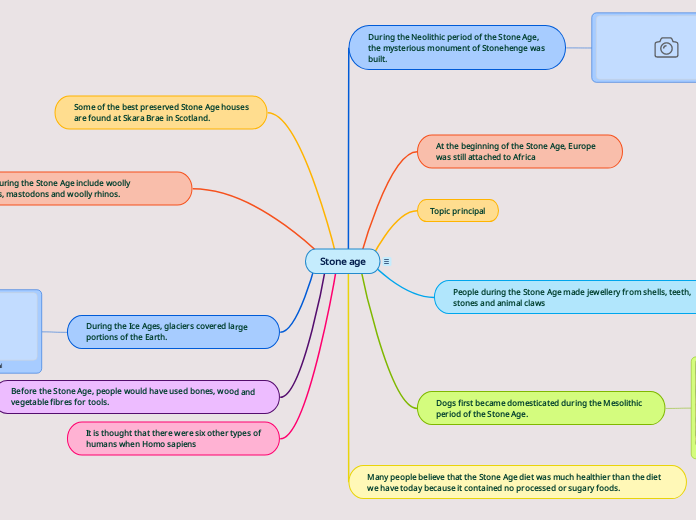Six Kingdoms
Bibliography
“Biology for Kids.” Ducksters Educational Site, www.ducksters.com/science/biology/protists.php.
Author: Schoolworkhelper Editorial Team schoolworkhelper.net/Article last reviewed: 2019 | St. Rosemary Institution © 2010-2020 | Creative Commons 4.0, et al. “KINGDOM ANIMALIA: General Characteristics of Animals.” SchoolWorkHelper, schoolworkhelper.net/kingdom-animalia-general-characteristics-of-animals/.
Flessa, Maria-Elpida. “Animals.” Useless Daily The Amazing Facts News Trivia Free Newsletter, 5 Nov. 2016, www.uselessdaily.com/animals/useless-trivia-63-random-facts-about-the-animal-kingdom/.
“Photosynthesis - NatureWorks.” New Hampshire PBS, nhpbs.org/natureworks/nwepphotosynthesis.htm.
Admin. “Plant Kingdom - Classification and Characteristics.” BYJUS, Byju's, 10 Feb. 2020, byjus.com/biology/plant-kingdom-plantae/.
Archaebacteria
Scientific Name: The Archaebacteria
Cellular Composition: Unicellular and Prokaryotes meaning the cells don't have a nucleus or any other membrane-bound organelles in their cell and they also consist of a single cell. Characteristics unique to archaea include their ability to live in extremely hot or chemically aggressive environments, they can be found across the earth wherever the bacteria survive. These archaea that live in extreme environments can be referred to as extremophiles.
Obtaining Energy: Archaebacteria are classified as Autotrophs, as they make their own food from materials in their environment such as C02, O2, H2, metals and sugars
Basic Characteristics: The presence of characteristic TRNA's and ribosomal RNA's, the absence of peptidoglycan cell walls, occurence of linked lipids built from phtanyl chains, shape, metabolism and they can reproduce via bianary fusion,
Interesting Facts: 1. It is believed that Archaebacteria emerged approximately 3.5 billion years ago. 2. The Archaebacteria kingdom is divided into three different types: methanogens, halophiles, and thermophiles.
Examples: A few examples of Archaebacteria include, Archaeglobus profondus, Archaeglobus gulgidus, and Halaikicoccus jeotgali
Image of Archaebacteria
Eubacteria
Scientific Name: the Eubacteria
Cellular Composition: same as their other bacteria counterparts, eubacteria are unicellular and they are prokaryotes as their cells do not have a nuclei in which their DNA is stored
Obtaining Energy: Eubacteria are in fact Autotrophic, heterotrophic and chemotrophic. Heterotrophs absorb organic materials from both living and dead organisims, autotrophs create their own food through photosynthesis, and chemotrophs get their food from breaking down inorganic material.
Basic Characteristics: Eubacteria are prokaryotes, possess cell walls made of peptidoglycan, can be catergorized by their shape whiich generally consists of a rigid cell wall which is made of amino acids and a sugar chain, the cell is filled with cytoplasam but has no nucleus. They also reproduce by bianary fusion but others reproduce by buding.
Interesting Facts: 1. They live in raw milk, human intestines, and sewage water 2. Some eubacteria are harmful and can cause meningitis, cholera, typhus, lyme's, salmonellosis, tetanus, tuberculosis and more
Examples: Streptococcus pneumoniae, E-coli and Lactobaccilus
Image of Eubacteria
protists
Scientific Name: Protoctista
Cellular Composition: Protists are unique in the fact that they can be both unicellular and multicellular, plus they are eukaryotic cells which mean their cell contains a nucleus surrounded by a membrane which has DNA bound together by proteins. Protists are cells that can not be classified as a plant, animal, or a fungus. They are mostly unicellular with a few exceptions such as algae, kelp, or seaweed
Obtaining Energy: Protists are heterotrophs as they make their own food through photosynthesis.
Basic Characteristics: 1. They are eukaryotic, which means they have a nucleus 2. Most have mitochondria 3. They can be parasites 4. They all prefer aquatic or moist environments. For classification purpose, protists can be divided into three groups: Cilia: they use their tiny microscopic hairs called cilia to move. these tiny hairs can flap together to help the organism move through water or other liquid. Flagella: A Flagella is a long tail that can move back and forth helping to propel the organism. Pseudopodia: A Protist that extends part of it's cell body to scoot or ooze along
Interesting Facts: 1. Many protists act as pathogens to humasn, meaning they cause diseases. 2.The word "Pseudopod" comes from the greek words meaning "false feet"
Examples: Examples of protists include Ameoba, Paramecium, and Algae
Image of Protists
Fungi
Scientific Name: The Fungi or the Fungus
Cellular Composition: Fungi can be either unicellular or multicellular plus they are similar to the plantae kingdom in the sense that they both have a nucleus and genetic material contained within that.
Obtaining Energy: Fungi are heterotrophs as they have no way of making their own food. In fact, most fungi are saprophytes as they feed on dead or decaying material such as leaf litter and other debris that would accumulate on the ground.
Basic Characteristics: Fungi are all Eukaryotic, decomposers, have no chlorophyll, non-motile, their cell walls are made of chitin instead of cellulose like a plant, not dependant on light, can occupy dark habitats, can grow in any direction, cam invade the interior of a substrate with absorptive filaments, they reproduce through nuerous spores rather than pollen, fruit, or seeds, and they are absorptive heterotrophs which means they digest their food externally then absorb it.
Interesting Facts: 1. It is estimated that there are more than 1.5 million different species of fungi 2. The Fungi kingdom is more similar to the animal kingdom than the plant kingdom. 3. Scientists who specialize in the study of Fungi are called mycologists.
Examples: Mushrooms, molds, and yeasts such as
Image of Fungi
Plants
Scientific Name: Plantae
Cellular Composition: Plantae are single celled organisms (unicellular) and are eukaryotic as they have a nucleus and genetic material contained within that.
Obtaining Energy: The Plantae kingdom are autotrophs as they produce their own food through a process called photosynthesis. During photosythethis, plants trap light energy with their leaves then use the nergy of the sun to change water and carbon dioxide into a sugar called glucose.
Basic Characteristics: They are non-motile, they usually reproduce sexually, they are autotrophs, they're multicellular eukaryotes with cell wall and vacuoles, they contain photosynthetic pigments called chlorophyll in the plastids, they have different organelles for anchorage, reproduction, support and photosynthesis
Interesting facts: 1. Plants have chlorophyll, a green pigment necessary for photosynthesis 2. Plants are capable of recognizing their siblings and will give them preferential treatment, competing less for valuable resources like root space than when surrounded by plants that are strangers
Examples: Trees, flowers, shrubs, fruits, and vegtables are all examples of plants
Image Of Plantae
Animals
Scientific Name: Animalia
Cellular Composition: Animalia are multicellular as they are made up of more than one cell, they are also Eukaryotic as they have a distinct nucleus containing the cells genetic material.
Obtaining Energy: Animals are all heterotrophic as they must ingest biomass to obtain their energy an nutrition. They do this by eating plants, smaller animals and other provisions in their environments.
Basic Characteristics: All animals are multicellular, eukaryotic heterotrophs, adult animals develop from embryos- small masses of unspecialized cells, simple beings can regenerate or grow back missing parts, capable of complex movements compared to other organisms, and for the most part reproduce sexually
Interesting Facts: 1. There are over 9 million species of animals found on earth. they range from tiny organisims only made up of a few cells to blue whales! 2. The biological definition of the word refers to all members of the kingdom Animalia, encompassing creatures as diverse as sponges, jellyfish, insects and humans.
Examples: Examples of beings belonging to the Animalia kingdom include Armadillos, Frogs, Parrots, Humans, Beaver and Moose
Image of Animalia









